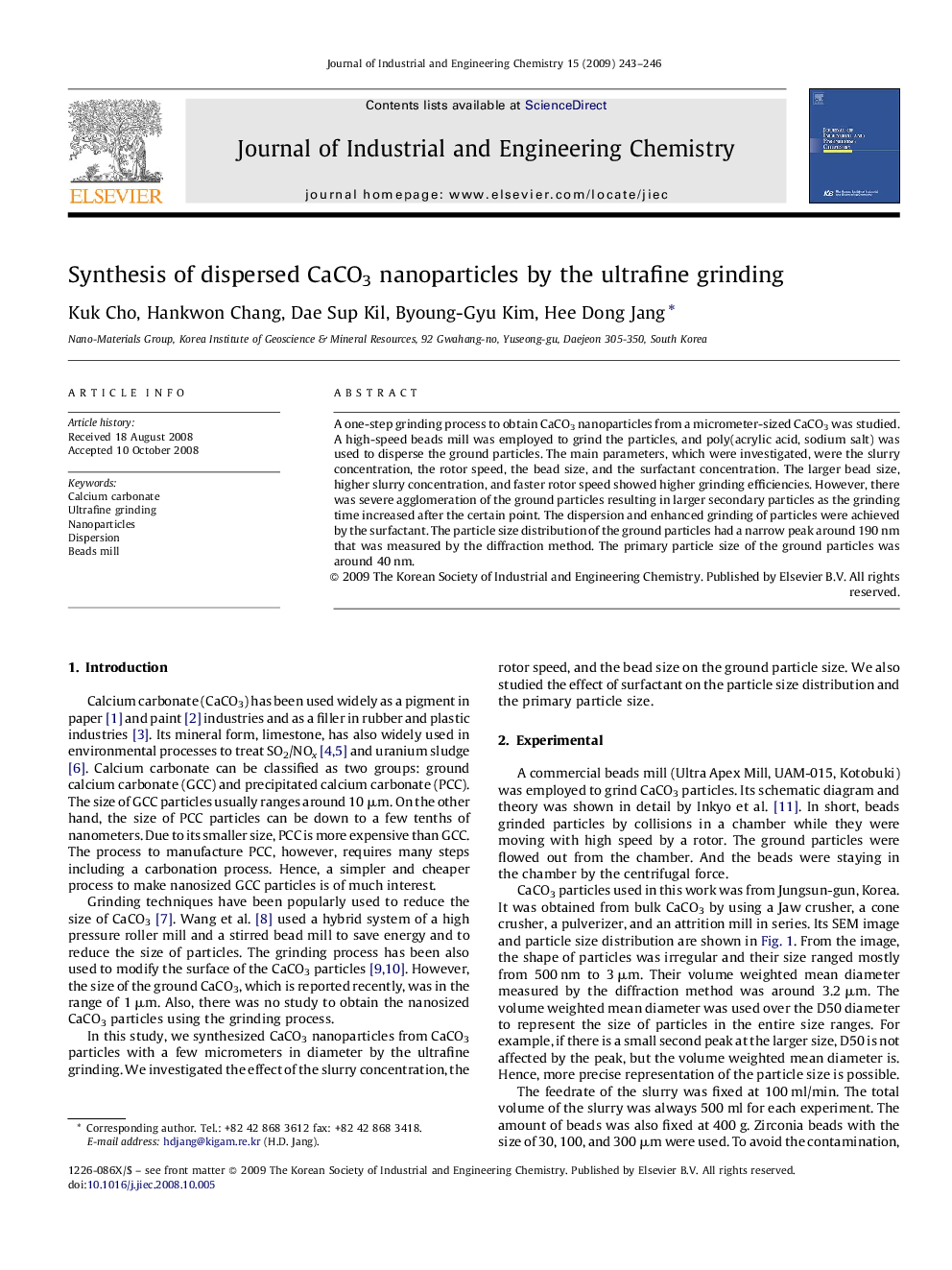| Article ID | Journal | Published Year | Pages | File Type |
|---|---|---|---|---|
| 229324 | Journal of Industrial and Engineering Chemistry | 2009 | 4 Pages |
A one-step grinding process to obtain CaCO3 nanoparticles from a micrometer-sized CaCO3 was studied. A high-speed beads mill was employed to grind the particles, and poly(acrylic acid, sodium salt) was used to disperse the ground particles. The main parameters, which were investigated, were the slurry concentration, the rotor speed, the bead size, and the surfactant concentration. The larger bead size, higher slurry concentration, and faster rotor speed showed higher grinding efficiencies. However, there was severe agglomeration of the ground particles resulting in larger secondary particles as the grinding time increased after the certain point. The dispersion and enhanced grinding of particles were achieved by the surfactant. The particle size distribution of the ground particles had a narrow peak around 190 nm that was measured by the diffraction method. The primary particle size of the ground particles was around 40 nm.
